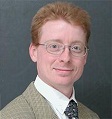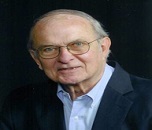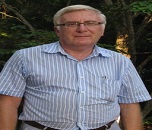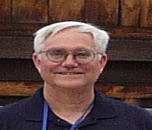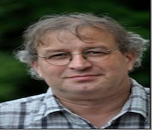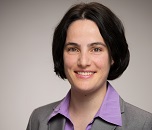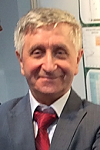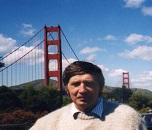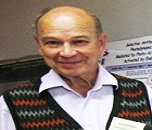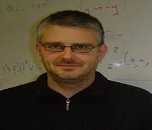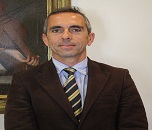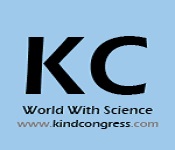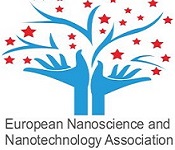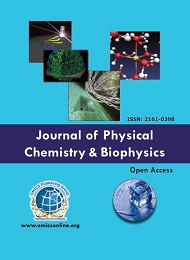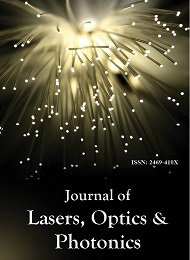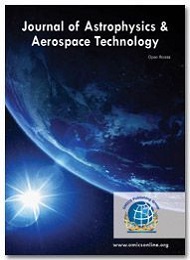Theme: Power of the past & Force of the future in arena of Physics covid-19’
Euro Physics 2020
Conference Series welcomes you all to the ‘6th International Conference on Physics’ during June 15-16, 2020. The theme of the conference is “Power of the past & Force of the future in arena of Physics Covid-19’’. The Committee is looking forward to organize an exceptional meeting with new and interesting sessions and discussion and to meet new people where you can share your subject and passion. At Physics 2020 you can acquire new information and will be very useful for expanding the knowledge in the field and generating new ideas to improve yourself and your professional career.
Importance and Scope:
Physics 2020 conducts a wide range of sessions and Tracks which provides the participants and all the attendees with an opportunity to extend their information in the subject and interact with professionals in the field of Physics. The agenda of the conference highlights new and advanced science and current topics with interesting Sessions, Symposia, Workshops, and Plenary talks, Keynote Presentations, Young Researchers Forum and Poster Sessions.
Conference Highlights:
Classical and Modern Physics
Condensed Matter Physics
Astro-Particle Physics & Cosmology
Material Physics
High Energy Nuclear Physics
Atomic, Molecular & Optical Physics
Quantum Science & Technology
Nano-Technology
Plasma Science
Electromagnetism and Electronics
Applied Physics
Heavy-ion Physics
Bio-Physics
Neutron Scattering
Particle Accelerators
Radiation Protection
Young Scientist Benefits
-
Our conferences provide best Platform for your research through oral presentations.
-
Share the ideas with both eminent researchers and mentors.
-
Young Scientist Award reorganization certificate and memento to the winners
-
Young Scientists will get appropriate and timely information by this Forum.
-
Platform for collaboration among young researchers for better development
-
Award should motivate participants to strive to realize their full potential which could in turn be beneficial to the field as whole.
Deadline for Registrations:
-
Platform for collaboration among young researchers for better development
-
Till March 28, 2020 – $399
-
Till April 28, 2020 – $499
-
Till June 28, 2020 – $599
Sessions/Tracks
Conference Series invites all participants across the world to attend 6th International Conference on Physics to be held on June 15-16, 2020. The theme of the conference covers “Power of the past & Force of the future in arena of Physics Covid-19”. Physics 2020 includes exemplary sessions, workshops, seminars, B2B meetings and exhibiting opportunities. The conference showcases world's most renowned scientists, researchers, academicians and more.
Track 1: Classical & Modern physics
Classical physics is generally concerned with matter and energy on the normal scale of observation, whereas modern physics is concerned with the behaviour of matter and energy under extreme conditions or on the very large or very small scale. In classical physics, time and space are absolute and independent, so time and space can be treated distinctly. However, in case of modern physics, time and space are relative and dependent. Between the Branches of classical and modern physics we can highlight acoustics, optics or mechanics in the most aboriginal field, and cosmology, quantum mechanics or relativity in the most current applications.
Related Socities:
Europe:
European Nuclear Society | European Physical Society | European Acoustics Association | Belgian Physical Society | European Optical Society | European Group for Atomic Spectroscopy | Austrian Physical Society | Max Planck Society.
USA:
American Astrophysical Society | American Astronomical Society | American Institute of Physics | American Physical Society | Optical Society of America | Canadian Association of Physicists.
AsiaPacific:
Astronomical Society of Australia | Physical Society of Hong Kong | Physical Society of the Republic of China | Plasma Science Society of India | Optical Society of Japan | Nepal Physical Society.
Track 2: Condensed Matter Physics
Condensed material physics is a branch of material science that engage with the physical properties of condense phase of matter, where particles stick to each other. Generally, they include the laws of quantum mechanics and electromagnetism. it is closely related with atomic physics and biophysics. Research in condensed matter physics includes the development of the semiconductor transistor, laser technology, and several phenomena studied in the context of nanotechnology.
Related Societies:
Europe:
European Nuclear Society | European Physical Society | European Acoustics Association | Belgian Physical Society | European Optical Society | European Group for Atomic Spectroscopy | Austrian Physical Society | Max Planck Society.
USA:
American Astrophysical Society | American Astronomical Society | American Institute of Physics | American Physical Society | Optical Society of America | Canadian Association of Physicists.
AsiaPacific:
Astronomical Society of Australia | Physical Society of Hong Kong | Physical Society of the Republic of China | Plasma Science Society of India | Optical Society of Japan | Nepal Physical Society.
Track 3:- Astro- Particle Physics & Cosmology
Astro- particle physics, is a branch of particle physics that studies basic particles of astronomical origin and lies at the intersection of particle physics and astrophysics. Whereas Cosmology is the study of the birth and evolution of the Universe. It is relatively a new field arising at the collaboration of particle physics, astronomy, astrophysics, relativity, solid state physics, and cosmology. Partially driven by the invention of neutrino oscillation. Research in Astro- particle physics field includes high-energy cosmic-ray physics, Particle cosmology, VHE and UHE gamma-ray astronomy, high- and low-energy neutrino astronomy.Cosmology mainly focuses on stellar dynamics and evolution; galaxy formation and evolution; magneto hydrodynamics; large-scale structure of matter in the universe; origin of cosmic rays; general relativity and physical cosmology, including string cosmology and Astro particle physics.
Related Societies:
Europe:
European Nuclear Society | European Physical Society | European Acoustics Association | Belgian Physical Society | European Optical Society | European Group for Atomic Spectroscopy | Austrian Physical Society | Max Planck Society.
USA:
American Astrophysical Society | American Astronomical Society | American Institute of Physics | American Physical Society | Optical Society of America | Canadian Association of Physicists.
AsiaPacific:
Astronomical Society of Australia | Physical Society of Hong Kong | Physical Society of the Republic of China | Plasma Science Society of India | Optical Society of Japan | Nepal Physical Society.
Track 4:- Material Physics
Material physics is the branch of physics that describes the physical properties of materials. It is considered as a subset of condensed matter physics which applies fundamental condensed matter concepts to complex multiphase media, including materials of technological interest. It forms the basis for the development of new materials with previously unachieved functionalities for future key technologies such as nanotechnology and biomaterials Materials physics has applications in a wide range of fields, from materials engineering and medicine to climate protection through efficient use of resources.
Related Societies:
Europe:
European Nuclear Society | European Physical Society | European Acoustics Association | Belgian Physical Society | European Optical Society | European Group for Atomic Spectroscopy | Austrian Physical Society | Max Planck Society.
USA:
American Astrophysical Society | American Astronomical Society | American Institute of Physics | American Physical Society | Optical Society of America | Canadian Association of Physicists.
AsiaPacific:
Astronomical Society of Australia | Physical Society of Hong Kong | Physical Society of the Republic of China | Plasma Science Society of India | Optical Society of Japan | Nepal Physical Society.
Track 5:- High Energy Nuclear Physics
Branch of physics involved in understanding the properties and behavior of elementary particles, through study of collisions or decays involving energies of hundreds of megaelectronvolts. Research in High Energy Nuclear Field Involves the exploration of the nuclear matter under extreme conditions and the Quark-Gluon Plasma, which existed for about a microsecond after the Big Bang. It now incorporates topics earlier considered the domain of particle physics, including exotic mesons, multi-GeV reaction studies, and the quark-gluon plasma.
Related Societies:
Europe:
European Nuclear Society | European Physical Society | European Acoustics Association | Belgian Physical Society | European Optical Society | European Group for Atomic Spectroscopy | Austrian Physical Society | Max Planck Society.
USA:
American Astrophysical Society | American Astronomical Society | American Institute of Physics | American Physical Society | Optical Society of America | Canadian Association of Physicists.
AsiaPacific:
Astronomical Society of Australia | Physical Society of Hong Kong | Physical Society of the Republic of China | Plasma Science Society of India | Optical Society of Japan | Nepal Physical Society.
Track 6: Atomic, Molecular & Optical Physics
Atomic physics is the field of physics that analyses atoms as an isolated system of electrons and an atomic nucleus while molecular physics is the study of the physical properties of molecules. Optical physics use and develop light sources that span the electromagnetic spectrum from microwaves to X-rays. The optical physics includes the generation and detection of light, linear and nonlinear optical processes, spectroscopy, lasers and laser spectroscopy. The three branches are closely interrelated. Naturally, the theory and applications of emission, absorption, scattering of electromagnetic radiation from atoms and molecules, analysis of spectroscopy, generation of lasers and masers, and the optical properties of matter fall into these categories.
Related Societies:
Europe:
European Nuclear Society | European Physical Society | European Acoustics Association | Belgian Physical Society | European Optical Society | European Group for Atomic Spectroscopy | Austrian Physical Society | Max Planck Society.
USA:
American Astrophysical Society | American Astronomical Society | American Institute of Physics | American Physical Society | Optical Society of America | Canadian Association of Physicists.
AsiaPacific:
Astronomical Society of Australia | Physical Society of Hong Kong | Physical Society of the Republic of China | Plasma Science Society of India | Optical Society of Japan | Nepal Physical Society.
Track 7:Quantum Science & Technology
Quantum physics is the study of the smallest particles which are likely to be the fundamental particles of universe. Quantum physics is necessary to understand the properties of solids, atoms, nuclei, sub nuclear particles and light. Its Subfields include: Quantum computing, Quantum cryptography, Quantum teleportation. Quantum cryptography the science of sending secret messages through a quantum channel. It uses properties of quantum mechanics to establish a secure key, a method known as quantum key distribution. Quantum computers boost processing power as they use quantum bits, or qubits. The most accurate clocks in the world, atomic clocks, use principles of quantum theory to measure time. Quantum techniques can also be useful to reducing the noise present in laser beams, a method known as squeezing.
Related Societies:
Europe:
European Nuclear Society | European Physical Society | European Acoustics Association | Belgian Physical Society | European Optical Society | European Group for Atomic Spectroscopy | Austrian Physical Society | Max Planck Society.
USA:
American Astrophysical Society | American Astronomical Society | American Institute of Physics | American Physical Society | Optical Society of America | Canadian Association of Physicists.
AsiaPacific:
Astronomical Society of Australia | Physical Society of Hong Kong | Physical Society of the Republic of China | Plasma Science Society of India | Optical Society of Japan | Nepal Physical Society.
Track 8: Nano-Technology
Nanotechnology Is the study of matter and machines down to scales of a billionth of a meter. It is one of the most dynamic areas of research and development as it plays a crucial role in basic physics and applied physics and engineering and in case of molecular materials. Nanotechnology is helping to revolutionize, many technology and industry sectors like information technology, homeland security, medicine, transportation, energy and many others.
Related Societies:
Europe:
European Nuclear Society | European Physical Society | European Acoustics Association | Belgian Physical Society | European Optical Society | European Group for Atomic Spectroscopy | Austrian Physical Society | Max Planck Society.
USA:
American Astrophysical Society | American Astronomical Society | American Institute of Physics | American Physical Society | Optical Society of America | Canadian Association of Physicists.
AsiaPacific:
Astronomical Society of Australia | Physical Society of Hong Kong | Physical Society of the Republic of China | Plasma Science Society of India | Optical Society of Japan | Nepal Physical Society.
Track 9:Plasma Science
Plasma are a collection of charged particles, both positive and negative which behave in a collective way and Plasma science is the research of charged particles and fluids interrelating with self-consistent electric and magnetic fields. It is a research discipline that has many different areas of application such as space and astrophysics, controlled fusion, accelerator physics and beam storage. Plasmas science is also used in connection with nanotechnology to create catalytic fuel cell electrodes that needs only one fifth of the platinum of conventional electrodes. Such advances are likely to have a reflective effect on "green" vehicles of the future.
Related Societies:
Europe:
European Nuclear Society | European Physical Society | European Acoustics Association | Belgian Physical Society | European Optical Society | European Group for Atomic Spectroscopy | Austrian Physical Society | Max Planck Society.
USA:
American Astrophysical Society | American Astronomical Society | American Institute of Physics | American Physical Society | Optical Society of America | Canadian Association of Physicists.
AsiaPacific:
Astronomical Society of Australia | Physical Society of Hong Kong | Physical Society of the Republic of China | Plasma Science Society of India | Optical Society of Japan | Nepal Physical Society.
Track 10:Electromagnetism and Electronics
Electromagnetism is a branch of physics concerning the study of the electromagnetic force and is one of the four fundamentals forces.it deals with the physical relations between electricity and magnetism. Whereas Electronics is the study of how to control the flow of electrons. Branches of Electronics includes Analogue electronics, Digital electronics, Microelectronics, Embedded systems etc.
Related Societies:
Europe:
European Nuclear Society | European Physical Society | European Acoustics Association | Belgian Physical Society | European Optical Society | European Group for Atomic Spectroscopy | Austrian Physical Society | Max Planck Society.
USA:
American Astrophysical Society | American Astronomical Society | American Institute of Physics | American Physical Society | Optical Society of America | Canadian Association of Physicists.
AsiaPacific:
Astronomical Society of Australia | Physical Society of Hong Kong | Physical Society of the Republic of China | Plasma Science Society of India | Optical Society of Japan | Nepal Physical Society.
Track 11:-Applied Physics
Applied physics Deals with physics research that unites "pure" physics with engineering. Applied physics research Is involved with developing instrumentation for scientific research. It is generally considered as a bridge in between physics and engineering. Applied physics deals with practical physics, i.e. the study of things for practical application. applied physics is rooted in the fundamental truths and basic concepts of the physics but is concerned with the utilization of these principles in practical devices and systems. Applied Physics include research in field of condensed matter, lasers and quantum electronics, high-speed opto-electronics, free-electron laser physics, vacuum tunneling, nondestructive testing, biophysics, synchrotron and accelerator physics, semiconductor physics and devices, and astrophysics and space physics.
Related Societies:
Europe:
European Nuclear Society | European Physical Society | European Acoustics Association | Belgian Physical Society | European Optical Society | European Group for Atomic Spectroscopy | Austrian Physical Society | Max Planck Society.
USA:
American Astrophysical Society | American Astronomical Society | American Institute of Physics | American Physical Society | Optical Society of America | Canadian Association of Physicists.
AsiaPacific:
Astronomical Society of Australia | Physical Society of Hong Kong | Physical Society of the Republic of China | Plasma Science Society of India | Optical Society of Japan | Nepal Physical Society.
Track 12: Heavy-ion-Physics
Atomic material science and Particle Physics is the zone of material science that reviews nuclear cores and their components and cooperations. The most usually known sort of atomic material science is atomic power era, the examination has hurry to tenders in many fields, including atomic medicine and attractive resonation imaging, atomic weapons, particle implantation in materials building, and radiocarbon dating in geography and archaic exploration.
Related Societies:
Europe:
European Nuclear Society | European Physical Society | European Acoustics Association | Belgian Physical Society | European Optical Society | European Group for Atomic Spectroscopy | Austrian Physical Society | Max Planck Society.
USA:
American Astrophysical Society | American Astronomical Society | American Institute of Physics | American Physical Society | Optical Society of America | Canadian Association of Physicists.
AsiaPacific:
Astronomical Society of Australia | Physical Society of Hong Kong | Physical Society of the Republic of China | Plasma Science Society of India | Optical Society of Japan | Nepal Physical Society.
Track 13: Bio Physics
Molecular biophysics normally addresses biological questions similar to those in biochemistry and molecular biology, seeking to find the physical underpinnings of biomolecular phenomena. Scientists in this field conduct research concerned with understanding the connections between the various systems of a cell, including the interactions between DNA, RNA and protein biosynthesis, as well as how these interactions are controlled.
Related Societies:
Europe:
European Nuclear Society | European Physical Society | European Acoustics Association | Belgian Physical Society | European Optical Society | European Group for Atomic Spectroscopy | Austrian Physical Society | Max Planck Society.
USA:
American Astrophysical Society | American Astronomical Society | American Institute of Physics | American Physical Society | Optical Society of America | Canadian Association of Physicists.
AsiaPacific:
Astronomical Society of Australia | Physical Society of Hong Kong | Physical Society of the Republic of China | Plasma Science Society of India | Optical Society of Japan | Nepal Physical Society.
Track 14: Neutron Scattering
The goal of modern materials science is to understand the factors that determine the properties of matter on the atomic scale, and then to use this knowledge to optimise those properties or to develop new materials and functionality. This process regularly involves the discovery of fascinating new physics, which itself may lead to previously unthought-of capabilities. Almost all of the major changes in our society, from the dramatic growth of computing and the internet to the steady increase in average life span, have their origin in our understanding and exploitation of the physics and chemistry of materials. To investigate atomic-scale structure and dynamics, scientists use a variety of tools and techniques, often based on the scattering of beams of particles. An “ideal” probe might be one that has a wavelength similar to the spacing between atoms, in order to study structure with atomic resolution, and an energy similar to that of atoms in materials in order to study their dynamics. It would have no charge, to avoid strong scattering by charges on the electrons or the nucleus and allow deep penetration into materials. It would be scattered to a similar extent by both light and heavy atoms and have a suitable magnetic moment so that we can also easily study magnetism. The scattering cross-section would be precisely measurable on an absolute scale, to facilitate comparison with theory and computer modelling.
Related Societies:
Europe:
European Nuclear Society | European Physical Society | European Acoustics Association | Belgian Physical Society | European Optical Society | European Group for Atomic Spectroscopy | Austrian Physical Society | Max Planck Society.
USA:
American Astrophysical Society | American Astronomical Society | American Institute of Physics | American Physical Society | Optical Society of America | Canadian Association of Physicists.
AsiaPacific:
Astronomical Society of Australia | Physical Society of Hong Kong | Physical Society of the Republic of China | Plasma Science Society of India | Optical Society of Japan | Nepal Physical Society.
Track 15: Particle Accelerators
A particle accelerator is a machine that accelerates elementary particles, such as electrons or protons, to very high energies. On a basic level, particle accelerators produce beams of charged particles that can be used for a variety of research purposes. There are two basic types of particle accelerators: linear accelerators and circular accelerators. Linear accelerators propel particles along a linear, or straight, beam line. Circular accelerators propel particles around a circular track. Linear accelerators are used for fixed-target experiments, whereas circular accelerators can be used for both colliding beam and fixed target experiments
Related Societies:
Europe:
European Nuclear Society | European Physical Society | European Acoustics Association | Belgian Physical Society | European Optical Society | European Group for Atomic Spectroscopy | Austrian Physical Society | Max Planck Society.
USA:
American Astrophysical Society | American Astronomical Society | American Institute of Physics | American Physical Society | Optical Society of America | Canadian Association of Physicists.
AsiaPacific:
Astronomical Society of Australia | Physical Society of Hong Kong | Physical Society of the Republic of China | Plasma Science Society of India | Optical Society of Japan | Nepal Physical Society.
Track 16: Radiation Protection
Radiation protection is a term applied to concepts, requirements, technologies and operations related to protection of people (radiation workers, members of the public, and patients undergoing radiation diagnosis and therapy) against the harmful effects of ionising radiation. It has its origins early in the twentieth century. The benefits of radiation were first recognised in the use of X-rays for medical diagnosis, very soon after the discoveries of radiation and radioactivity. The rush to exploit the medical benefits led fairly soon to the recognition of the other side of the coin, that of radiation-induced harm. In those early days, only the most obvious forms of harm resulting from high doses of radiation, such as radiation burns , were observed and protection efforts focused on their prevention, mainly for practitioners rather than patients. Although the issue was narrow, this was the origin of radiation protection as a discipline. Over the middle decades of this century, it was gradually recognised that there were other, less obvious, harmful radiation effects such as radiation-induced cancer, for which there is a certain risk even at low doses of radiation. This risk cannot be completely prevented. It can only be minimised. Therefore, the overt balancing of benefits from nuclear and radiation practices against radiation risk, and efforts to reduce the residual risk, have become a major feature of radiation protection
Related Societies:
Europe:
European Nuclear Society | European Physical Society | European Acoustics Association | Belgian Physical Society | European Optical Society | European Group for Atomic Spectroscopy | Austrian Physical Society | Max Planck Society.
USA:
American Astrophysical Society | American Astronomical Society | American Institute of Physics | American Physical Society | Optical Society of America | Canadian Association of Physicists.
AsiaPacific:
Astronomical Society of Australia | Physical Society of Hong Kong | Physical Society of the Republic of China | Plasma Science Society of India | Optical Society of Japan | Nepal Physical Society.
According to the “Quantum Computing Market & Technologies – 2018-2024” report, the global market will grow at a CAGR of 24.6% throughout 2018-2024. During 2017 Quantum Computing technologies performance has increased at an impressive rate; we forecast that 2018-2019 will experience a surge of breakthroughs.
We are in the midst of a “Quantum Computing Supremacy Race”, one that will result in ground-breaking computing power that surpasses the performance of digital supercomputers. The quantum computing technologies have the potential to change long-held dynamics in commerce, intelligence, military affairs and strategic balance of power. If you have been paying attention to the news on quantum computing and the evolution of industrial and national efforts towards realizing a scalable, fault-tolerant quantum computer that can tackle problems, unmanageable to current supercomputing capabilities, then you know that something big is stirring throughout the quantum world. In a way that was unheard of five years ago, quantum physicists are now partnering with corporate tech giants, to develop quantum computing capabilities and technologies as the foundation of a second information age. Advances in quantum computer design, fault-tolerant algorithms and new fabrication technologies are now transforming this “holy grail” technology into a realistic program poised to surpass traditional computation in some applications. With these new developments, the key question that companies are asking is not whether there will be a quantum computer, but who will build it and benefit from it.
According to the new market research report on the by Type Application of physics like (Optical communication & laser processing), Vertical (Commercial, Telecom, Research, Defense, Medical, Automotive, Electronics, & Industrial), & Geography - Global Forecast to 2022", this market is expected to be valued at USD 15.38 Billion by 2022, at a CAGR of 5.2% between 2017 and 2022. The major factors driving the growth of physics include increasing demand from the healthcare sector, environmental sector, financial sector and shift towards production of nano and micro devices, and enhanced performance over the traditional material processing techniques.
Atomic Physics systems has been increasing due to the developing necessities of the industries as wells as the substantial demand. Atomic Physics market is estimated to reach USD 5.60 Billion by 2020, rising at a CAGR of 6.0% through the calculation period of 2015 to 2020. North America probably has the largest share, in the upcoming years; the atomic physics market is expected to see the maximum growth rate in the Asia-Pacific region, with accent on India, China and Japan. Some of the key players in the global atomic physics market comprise Agilent Technologies (U.S.), PerkinElmer (U.S.), Thermo Fisher Scientific (U.S.) and Bruker Corporation (U.S.).
Nuclear Physics is used to define, describe and forecast the market on the basis of process, end users and region. Nuclear Physics market is expected to reach USD 2.85 Billion by 2021 from USD 2.25 Billion in 2016, mounting at a CAGR of 4.8% through the calculation period of 2016 to 2021. We can analyze the size of the nuclear physics market with respect to four main regions i.e., North America, Europe, Asia-Pacific and the Rest of the World. It provides the complete details of the competitive landscape for the market leaders for the opportunities of stakeholders.
Applied Physics is intended for technical and practical use. Applied Physics is established in the basic certainties and essential ideas of the Physical sciences and it utilizes the scientific principles in practical devices and in other related areas such as Lasers, Optics, Semiconductor devices and Nanophotonics. Demand for Physics is always there in the market because of its applications.
In the past market analysis it was suggested that the worldwide market for Physics was expected to reach around £3.4 billion by 2018. As indicated by later gauges by market forecasters BCC research, the global market for Physics based industries was worth significantly more, about £4.3 billion more in 2017 and is expected to increase around£6.2 billion by 2018, proportionate to the annual growth of 7.7%.Extending applications in the Cardiac, Breast MRI and Neurologic areas are expected to drive the world market which was anticipated to increase from£770 million in 2015 to reach around £1.2 billion by 2019 which is equivalent to yearly development 9.3% a year.
Why to attend?
6th International Conference on Physics is going to be the biggest conference dedicated to Physics provides a premier technical forum for reporting and learning about the latest research and development, along with launching new applications and technologies. Events include hot topics presentations from all over the world and professional networking with industries, leading working groups and panels.
Conference Series is conducting this event which includes present significant themes of physics conferences such as medical physics conference, applied physics conference, occupational physics conference, high energy physics conference, plasma physics conference, applied physics conference, condensed matter physics conference, quantum physics conference, etc.
Major Physics Associations around the Globe
International Union of Pure and Applied Physics
International Astronomical Union
The international society for optics and photonics
International Union of Crystallography
Society of Non-Linear and Dynamics Econometrics
The International Association of Mathematical Physics (IAMP)
The international society for optics and photonics (IUPAB)
Target Audience:
Physics 2020 is expecting the participants from all over the world in its multidisciplinary fields. This mixture of audience will give boost and opportunity to justify our theme " Power of the past & Force of the future in arena of Physics".
Physics 2020 expecting attendees from,
Professors, Students, Researchers and Technical Staff from Physics and Astronomy and other related disciplines
Scientists and students from Engineering and Technology (E&T)
Delegates from Physical Science and Nanotechnology Associations
Delegates from Physics, Semiconductor, Electronics, Power and Energy related industries
Directors of Companies
Managers and Business Intelligence Experts
Research students and Research Institutes
Advertising and Promotion Agency Executives
Nanotechnology Engineers
World-renowned speakers, the most recent techniques, tactics and the newest updates along with the future innovations in the field of Physics. Come be a part of it...!
Euro Physics 2019 marked with the attendance of Honourable Keynote Speaker, Delegates, Academic Researchers, Organizing Committee Members and talented student communities representing more than 20 countries, who made this conference a remarkable and productive.
Theme: “Power of the past & Force of the future in arena of Physics”
· Classical and Modern Physics
· Condensed Matter Physics
· Astro-Particle Physics & Cosmology
· Material Physics
· High Energy Nuclear Physics
· Atomic, Molecular & Optical Physics
· Quantum Science & Technology
· Nano-Technology
The conference was initiated with a series of lectures delivered by Honourable Guests, Academic Professions, Expert Scientists and Students (PhD and PostDoc).
Few of our reputed speakers participated from around the world were listed below
· Masanori Iye, NAOJ, Japan
· Lia Leon Margolin, Marymount Manhattan College, USA
· Raymond Chong, Agusta University, USA
With the grand success of Euro Physics-2019, Conferenceseries LLC Ltd is proud to announce the " 6th International Conference on Physics” is going to be held in June 15-16, 2020 in Barcelona, Spain
Conference Highlights
- Classical & Modern Physics
- Condensed Matter Physics
- Astro-Particle Physics & Cosmology
- Material Physics
- High Energy Nuclear Physics
- Atomic, Molecular & Optical Physics
- Quantum Science & Technology
- Nano-Technology
- Plasma Science
- Electromagnetism and Electronics
- Applied Physics
- Heavy-ion physics
- Biophysics
- Neutron Scattering
- Particle accelerators
- Radiation Protection
To share your views and research, please click here to register for the Conference.
To Collaborate Scientific Professionals around the World
| Conference Date | June 15-16, 2020 | ||
| Sponsors & Exhibitors |
|
||
| Speaker Opportunity Closed | Day 1 | ||
| Poster Opportunity Closed | Click Here to View | ||
Useful Links
Special Issues
All accepted abstracts will be published in respective Our International Journals.
- Journal of Physical Chemistry & BiophysicsJournal of Physical Chemistry & Biophysics
- Journal of Fluid Mechanics
- Journal of Lasers, Optics and Photonics
Abstracts will be provided with Digital Object Identifier by















